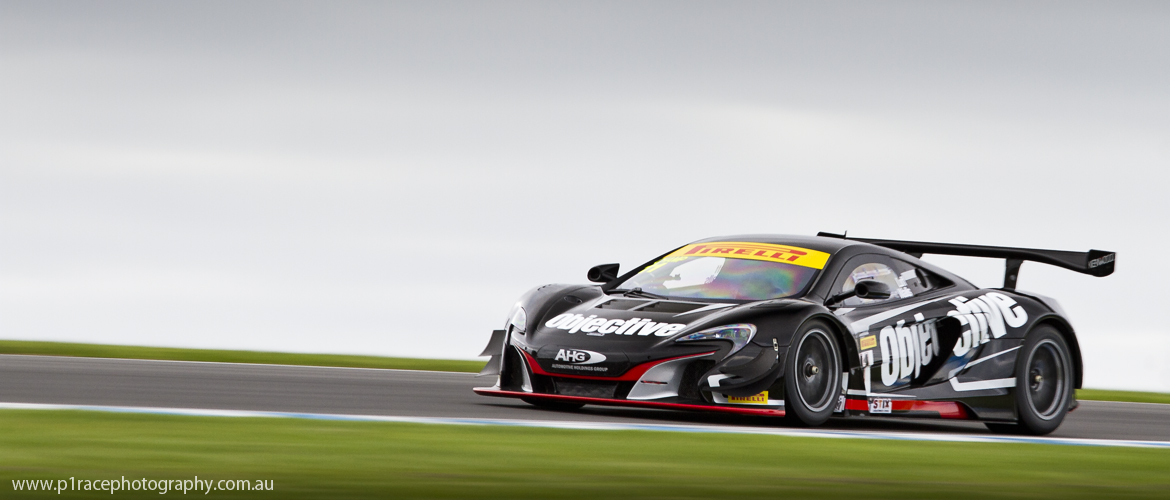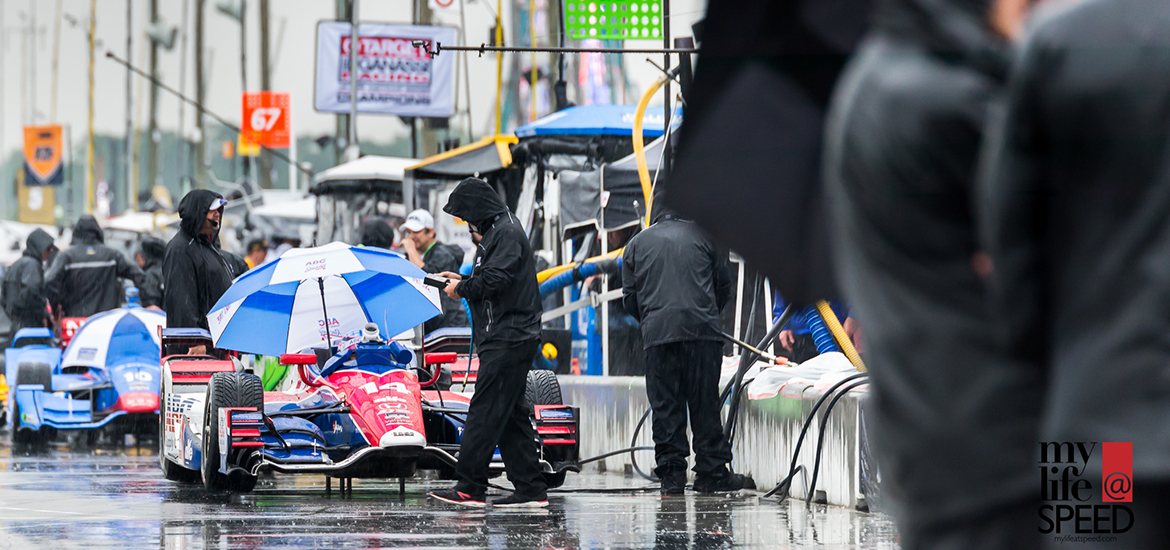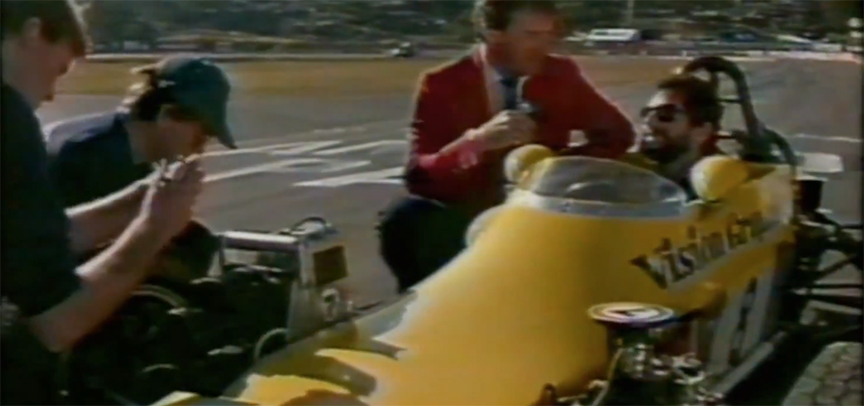When you think Australian motorsport, particularly if you live outside Australia, V8 Supercars is generally the first series that comes to mind. It’s the biggest, gets the most media coverage and the racing has the best reputation. But there is another national series here in Australia that perhaps not many non-Australians know much about, and that’s the Shannons Nationals.

Introduced as a series in 2006, with the Shannons insurance company sponsorship coming a year later, the Nationals have always played second fiddle to the V8s in terms of mindshare, but that may well be just a combination of Australia’s deep, deep love for V8s and the sheer marketing clout the bigger series has. Because in terms of racing, variety and field quality, there’s very little to separate them. In fact, depending on your tastes, the Nationals may well be superior.

To whit, I can’t think of too many other national series that offer such a broad range of categories. While not every one of them participates in every round, the series includes (deep breath) Formula 3, Formula Ford, Saloon Cars, modified production cars, Porsche Carrera Cup, IROC Challenge, Sports Sedans, V8 Touring Cars (essentially older V8 Supercars), Australian Superkarts, Formula Vee, Radical Cup, Australian Super Six Touring Cars and Aussie Racing Cars. Phew.
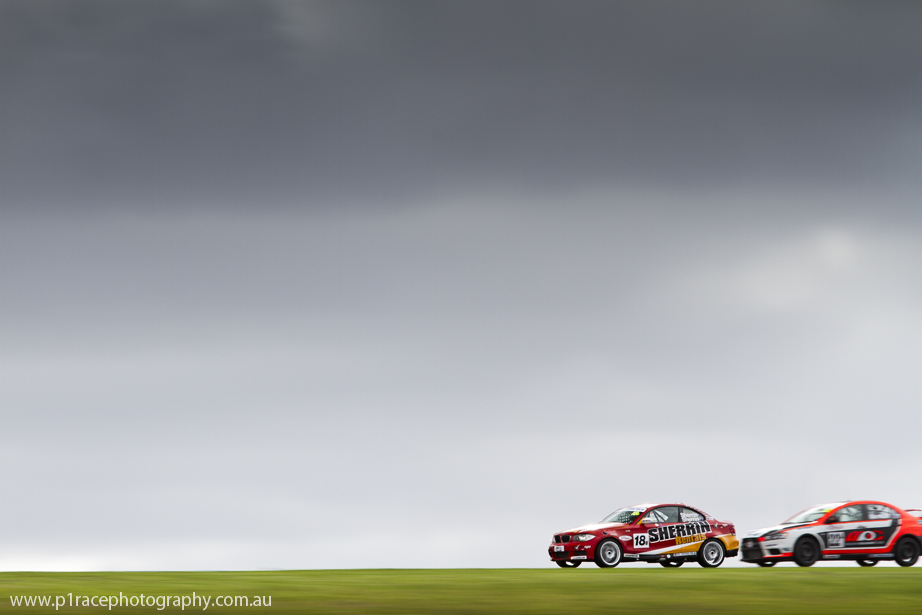
Now, if that doesn’t offer something for everyone into circuit racing, I don’t know what to say. And it’s this variety that makes the Nationals so fascinating. You’ll see a wide range of machinery, driven by everyone from the weekend warrior to the top pro. It’s great value. And unlike V8 Supercars, you can livestream every round free via the series’ website, watch the most recent round via free video-on-demand, or get highlights on either free-to-air or Foxtel pay TV. It’s easily the most accessible and forward-thinking form of Australian motor racing in that respect.
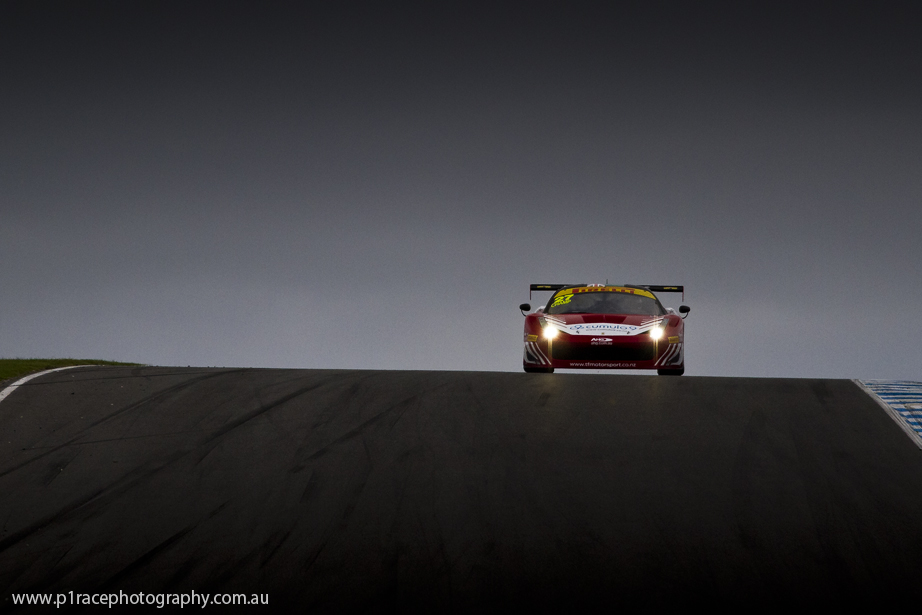
It’s because of this variety, value and relative lack of international coverage that I’ve been meaning to share this series with all you My Life at Speeders for a while, but scheduling clashes have always prevented me until now. I’m glad I waited in a way, though, as the most recent round of the 2015 season – round two at Phillip Island – was a doozy.
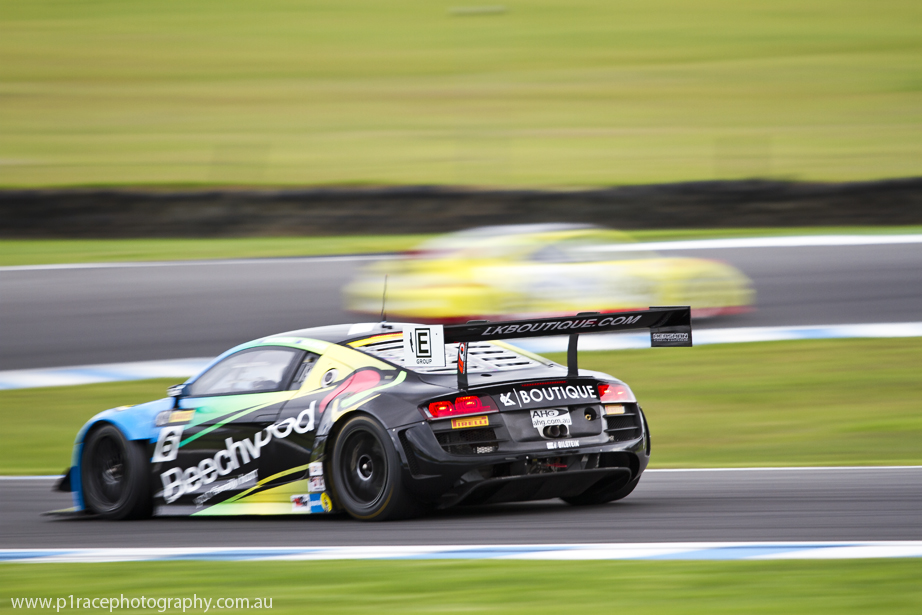
Not only did you have Carrera Cup, F3s and Formula Ford, you had a four-hour Australian Manufacturer’s Championship enduro on Sunday and the Phillip Island 101 Australian GT Championship endurance race on Saturday. Admittedly, the two distance events meant some of the other categories had to give way, but the fans were treated to some excellent action in all races, and frankly, who doesn’t love endurance sports car racing?
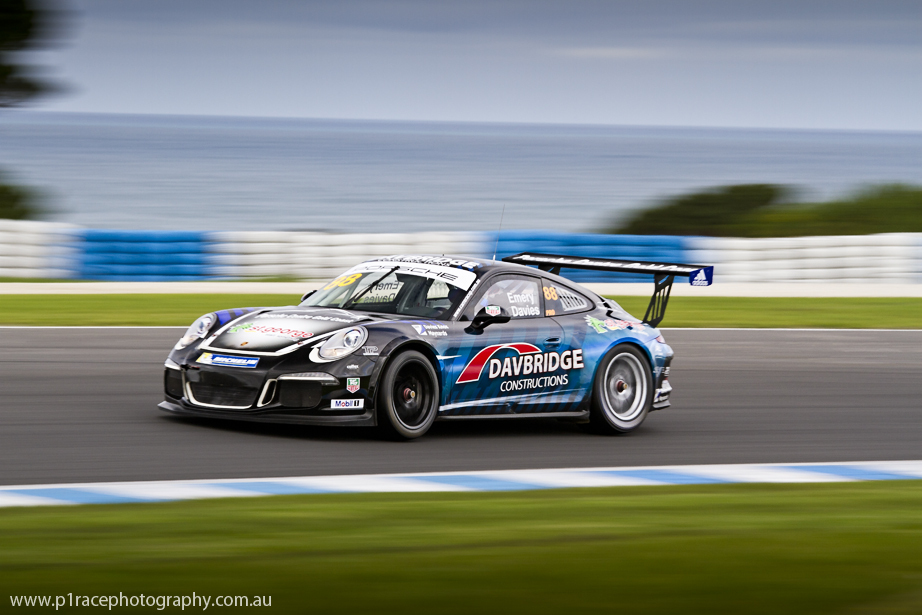
Just to give an overview of each category, Carrera Cup here in Australia is, as you’d expect, exactly the same as it is elsewhere – 991 Cup cars competing flat out at circuits around the country.
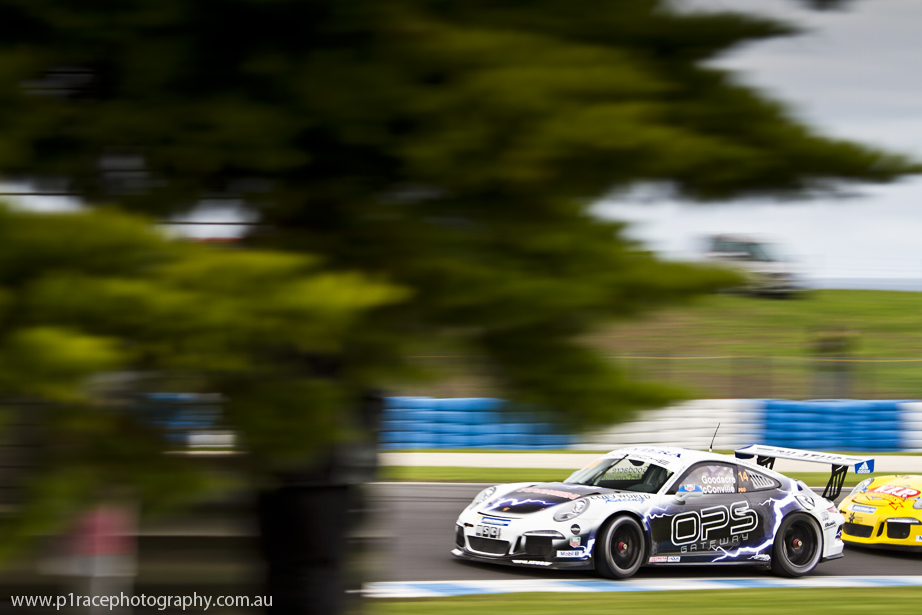
Drivers include both gentlemen racers and pros, with several ex-V8 Supercars drivers getting their racing kicks in this series, such as Cameron McConville …
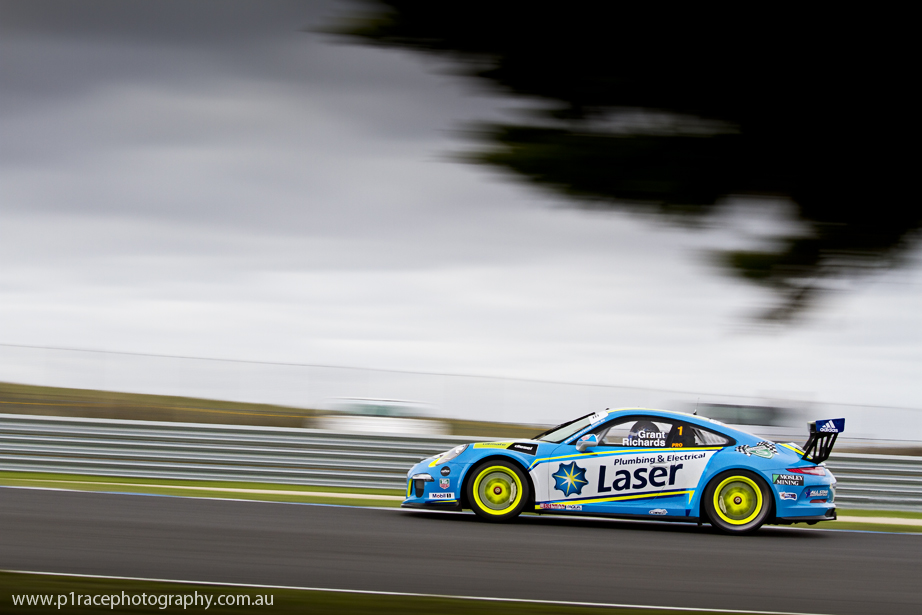
… Steven Richards …
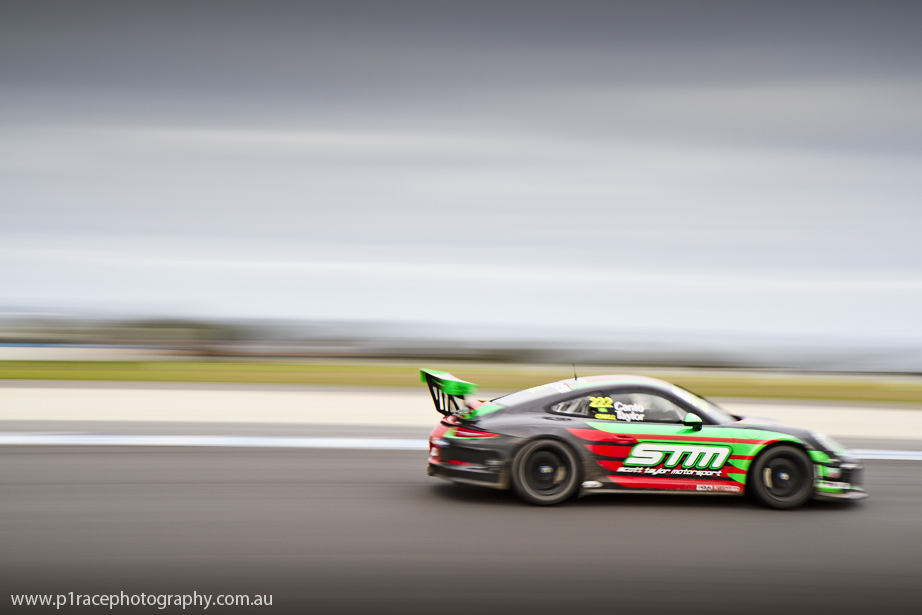
… and Dean Canto.
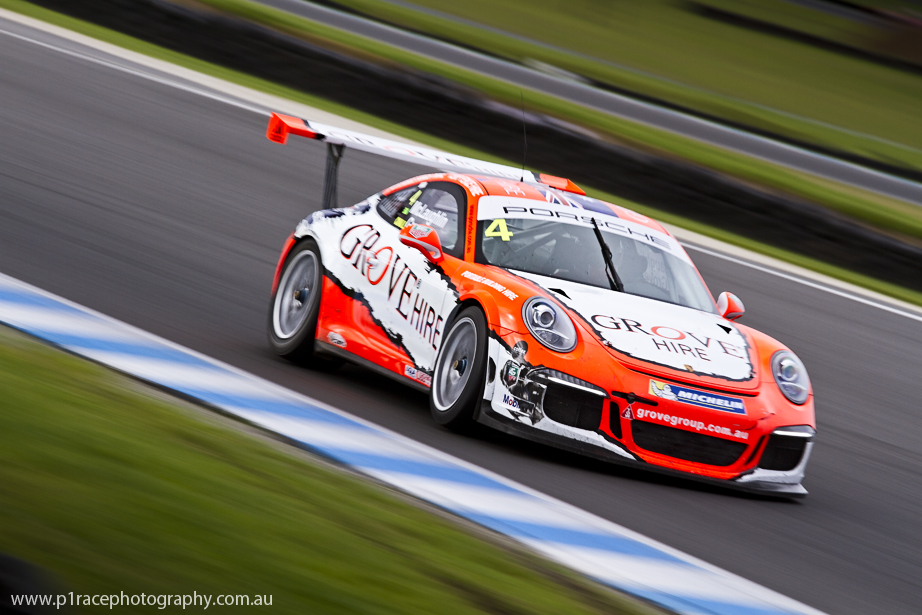
For Phillip Island, you had the added bonus that each of the two races (one on Saturday, one on Sunday) was a Pro-Am 36 lapper, which meant driver changes and the appearance of paid ringers you wouldn’t normally see in Carrera Cup, like Nick Percat and Scott McLaughlin (pictured above). These two had a ding-dong battle throughout the weekend, with McLaughlin especially relishing the chance to go hard and perhaps wipe out at least some of the memory of his disastrous V8 Supercars season so far. In the end, Percat came out on top both times, thanks to the Grove Porsche’s pit lane limiter sticking on after the driver change in race one, and Grove himself spinning unaided coming into turn 4 in race two, but much fun was had by all in the process.

Formula 3, on the other hand, is a bit strange here in Australia, as open wheel categories in general have never really been as popular as tin tops down under, and the wings and slicks series has never really caught on, so you had only seven cars on track at any one time.

This wasn’t to say fans endured boring races, as the lead battle between Jon Collins (pictured) and Ricky Capo especially lasted all weekend and meant spectators and viewers enjoyed some great action. However, one has to wonder what will become of the category, seeing as our national motorsport body, CAMS, has pushed very hard recently to introduce Formula 4 here, most likely at the cost of both F3 and Formula Ford.
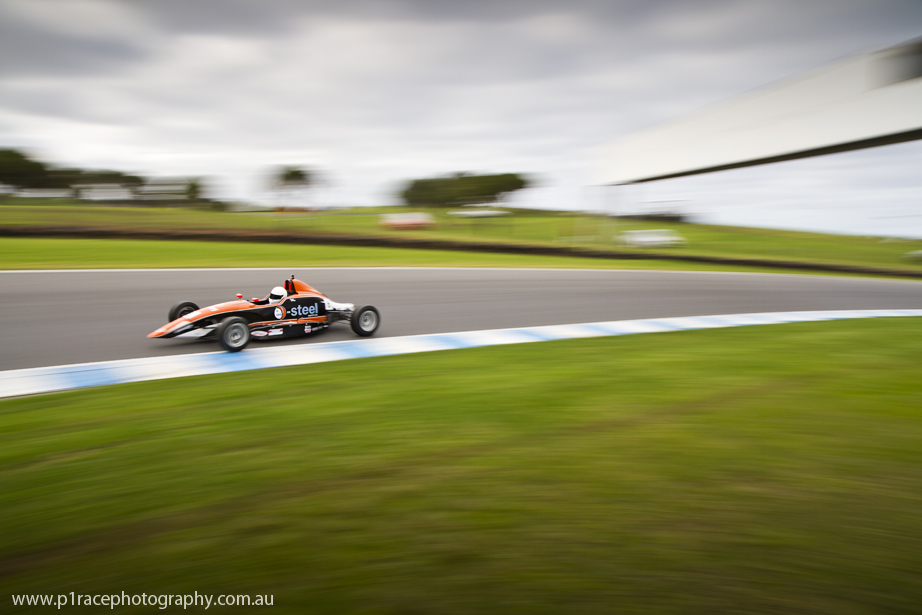
Speaking of Formula Ford, while it may also be down, with entry numbers significantly lower than even a few years ago, it is certainly not out.
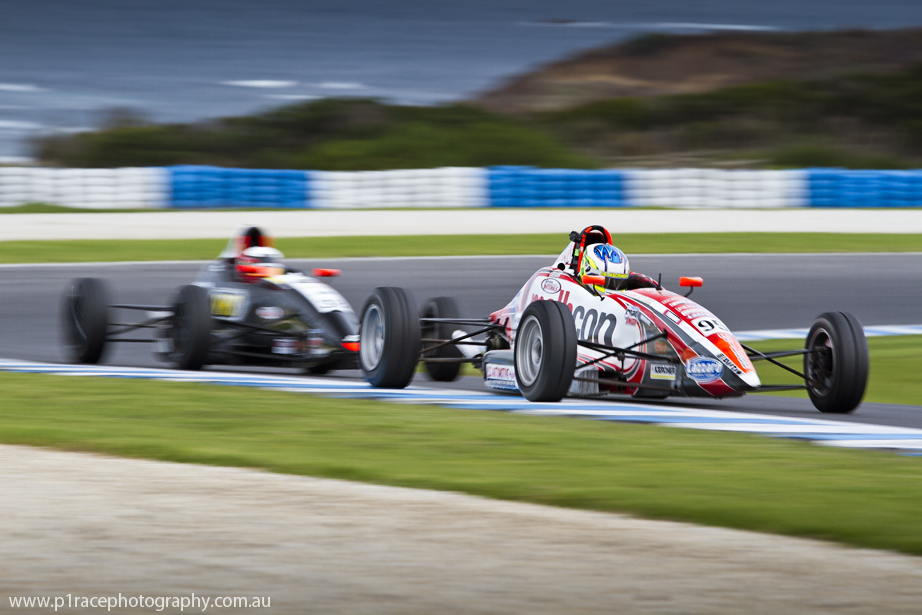
Like F3, the racing was, as always, tight and fun and proved why the series has provided the bulk of open-wheel champions over the decades.
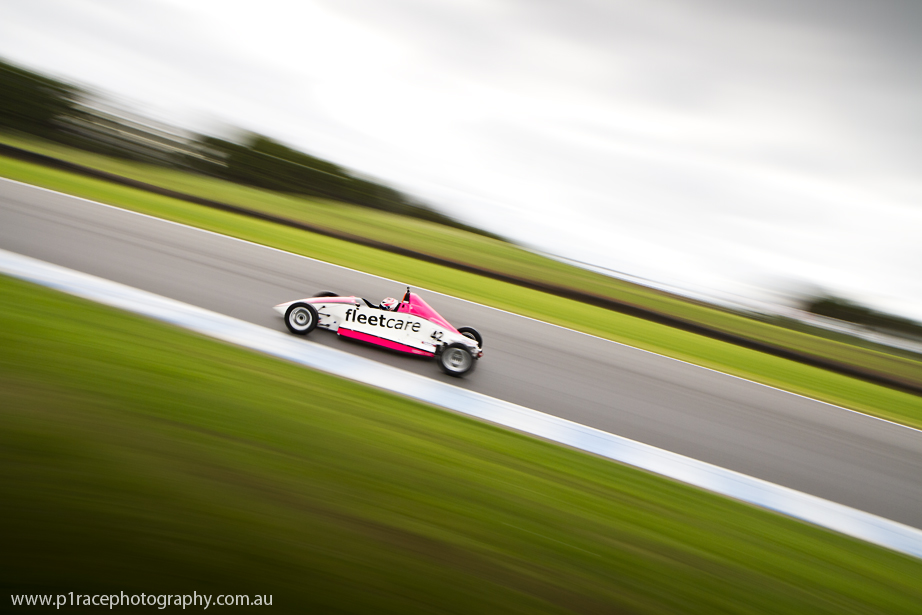
Even if they’re not rising up through the ranks any more, you still get some recognisable names, too. Leanne Tander is the wife of V8 driver Garth, and proved it’s not just her husband who’s fast.
If the series does disappear in favour of F4, though, it will be missed, and I personally wonder whether future drivers will lose out in terms of skills and craft, given F4 is a wings and slicks category. Who knows?
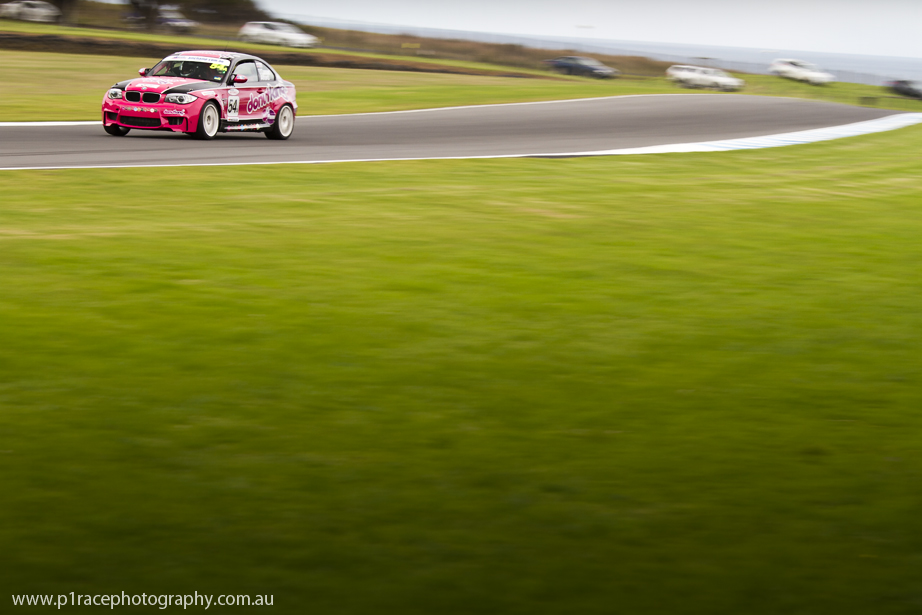
Switching back to closed wheels, the Australian Manufacturer Championship is for those who love to see relatable road cars go hard.

Evos, 135is, 86s and even Aussie heroes like the FPV GT above all push each other to the limit, and it’s great to see. In many respects, this is about as close as you’ll get to what touring car racing used to be like here – back in the days of Brock and Johnson, when you really did race production cars like Mini Coopers, Ford Falcon GTs and Holden Monaros straight off the showroom floor with minimal mods.
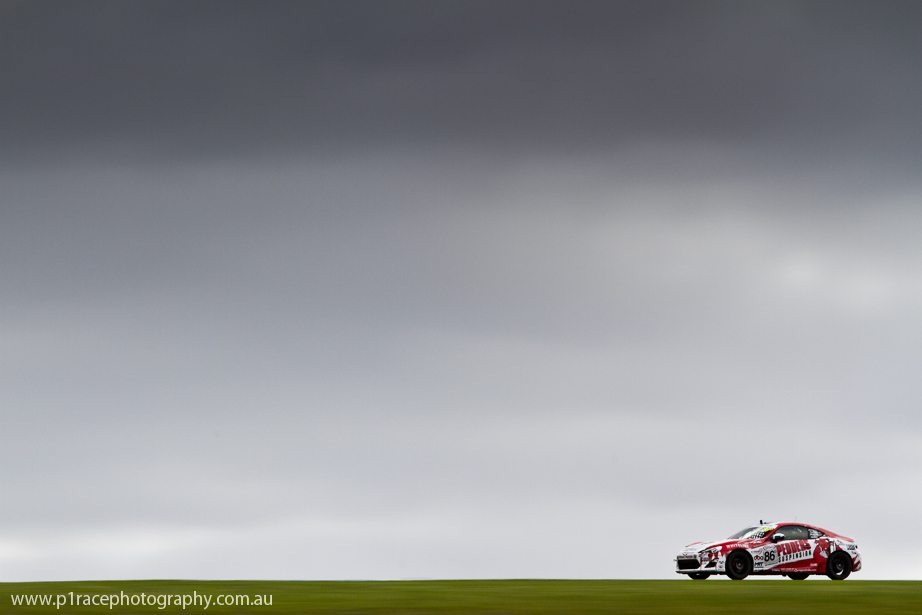
Sadly, I couldn’t attend the Sunday, so missed out on the four-hour enduro for this category, but even just seeing these relatively affordable beasties out on track was enjoyable.
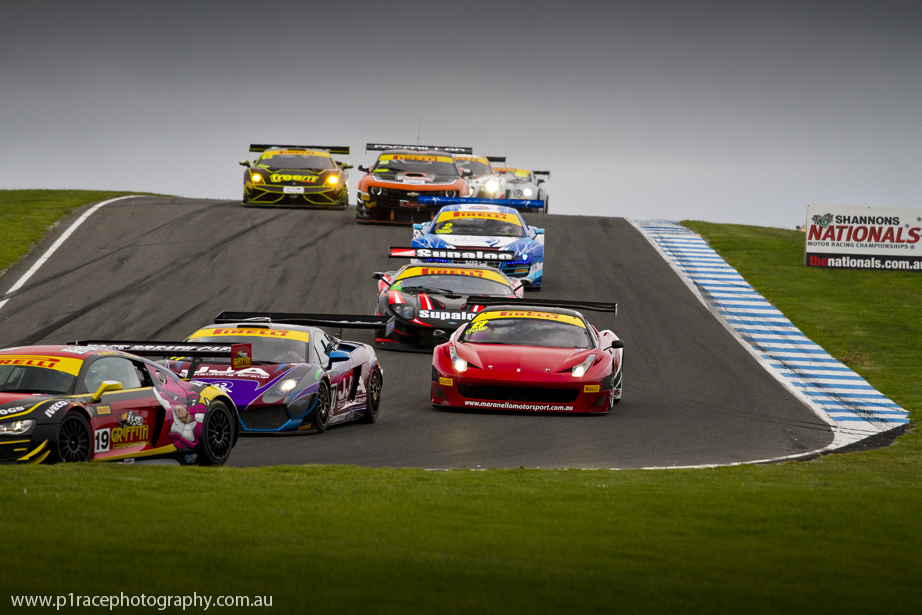
On the complete opposite end of the pay scale, the Australian GT Championship, and its Saturday feature event, the Phillip Island 101, showed what you can do with a lot more money.

Currently run by Darrell Lea confectionery owner, Tony Quinn (above), who also sold his VIP Petfoods business just before publication for AU$400 million, the series has mirrored the stratospheric rise of GT racing worldwide over the last few years, with an at-times oversubscribed grid of 32 GT3-spec cars (compared with V8 Supercars’ 25) this year and plans for more enduros next year, bringing the series more into line with larger GT3 categories like America’s Tudor series.
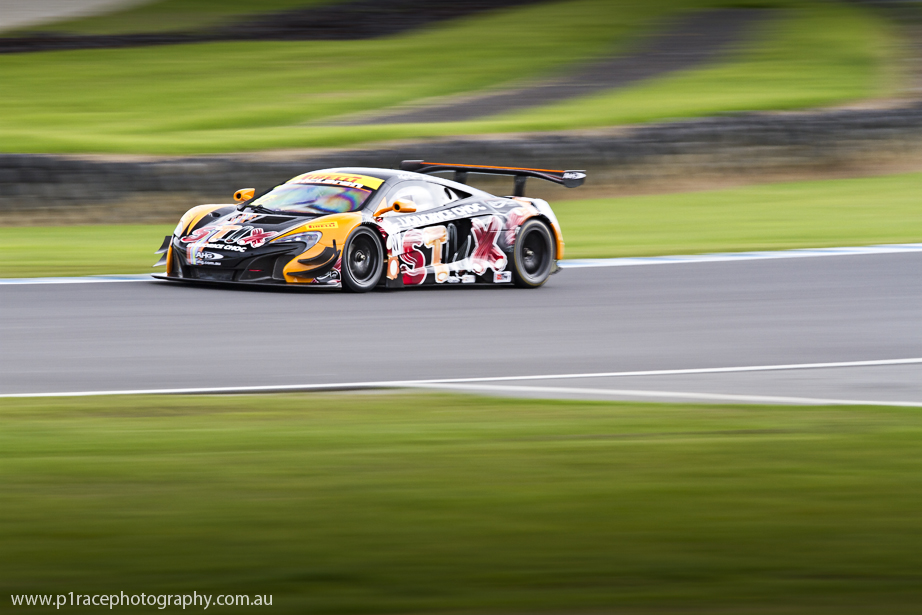
While it may seem like a conflict of interest running in the series you control, Quinn and his son Klark (above) certainly don’t dominate the championship, and it’s clear Tony has the series’ and motorsports in general’s best interests at heart. See the fact he built the amazing Highlands Motorsport Park in New Zealand using his own cash, just recently purchased the Hampton Downs circuit there too, and helped secure the return of the Race To The Sky there this year for further evidence.
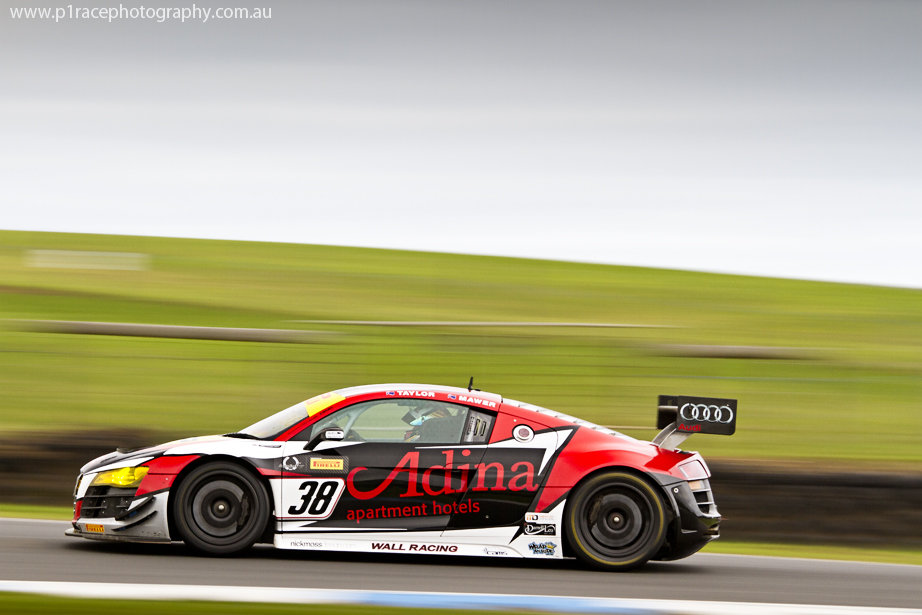
It’s worth noting here that normally, the GTs don’t run as part of the Nationals, and only do so at Phillip Island this year, with the remainder of the rounds either part of the V8 Supercars show or competing on their own terms for the Highlands round in New Zealand. That will most likely change in 2016 and beyond as Quinn expands the series, but what that will mean for the Nationals is yet to be seen.
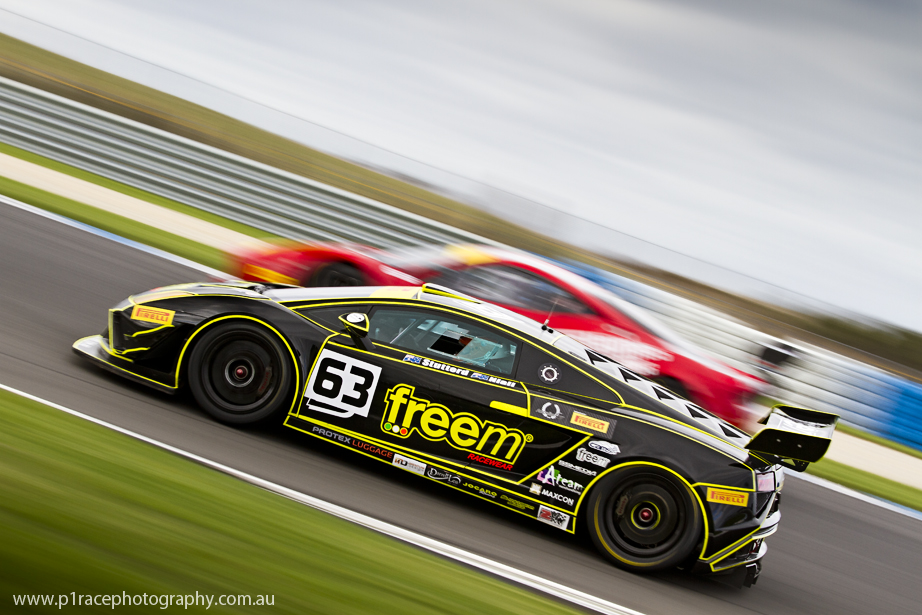
In terms of cars, the Australian GT Championship tends to run a fairly similar mix of machinery to most other series worldwide. You have a massive preponderance of Audis and Ferraris, with the odd Lambo thrown in for good measure.

There some fun and relatively unusual cars in the mix as well, though. Uniquely for Australia, and new to the championship for this round thanks to last-minute eligibility approval, we had a MARC Cars Australia Focus competing. For those who might not be aware, the MARC cars are an Australian-built spec tube-frame chassis (designed by PACE Innovations, who designed the V8 Supercars Car Of The Future) that can accommodate anything from the Focus body above to the low-slung panels of a Toyota 86. Engines can be almost anything the driver chooses to fit for their particular category, and in this case, there’s a 5-litre Coyote V8 under the bonnet. Trust me when I say it’s weird seeing a Focus go past with a big, rumbly V8 noise emanating from it.
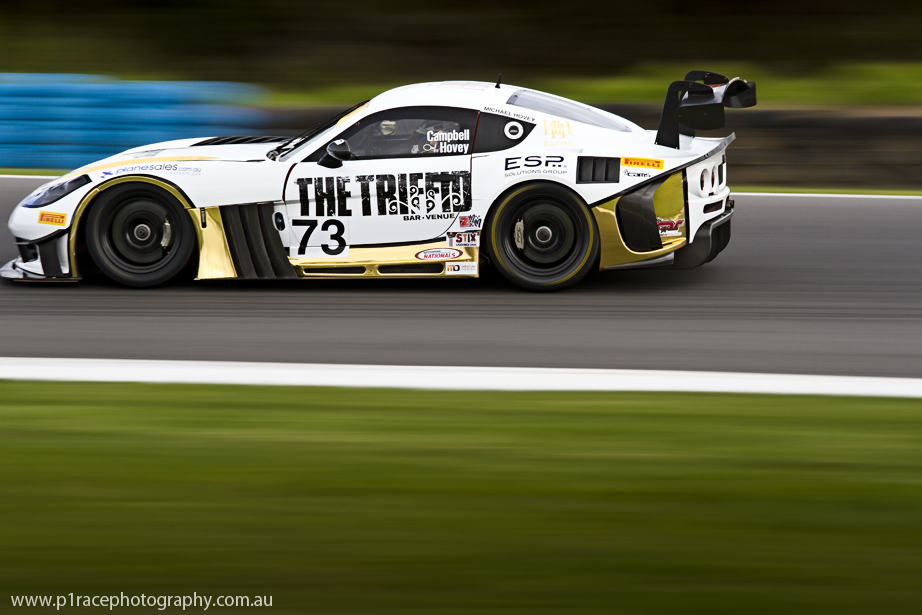
Other cars with only a single regular presence in the field here include the wonderful Campbell/Hovey Ginetta G55 GT3, which manages to turn in 1.27 laps at the Island even in enduro trim (the outright GT record is 1.27.1505, set by Jack Le Broq in 2013 in an SLS), despite only packing a 4.35 litre engine …
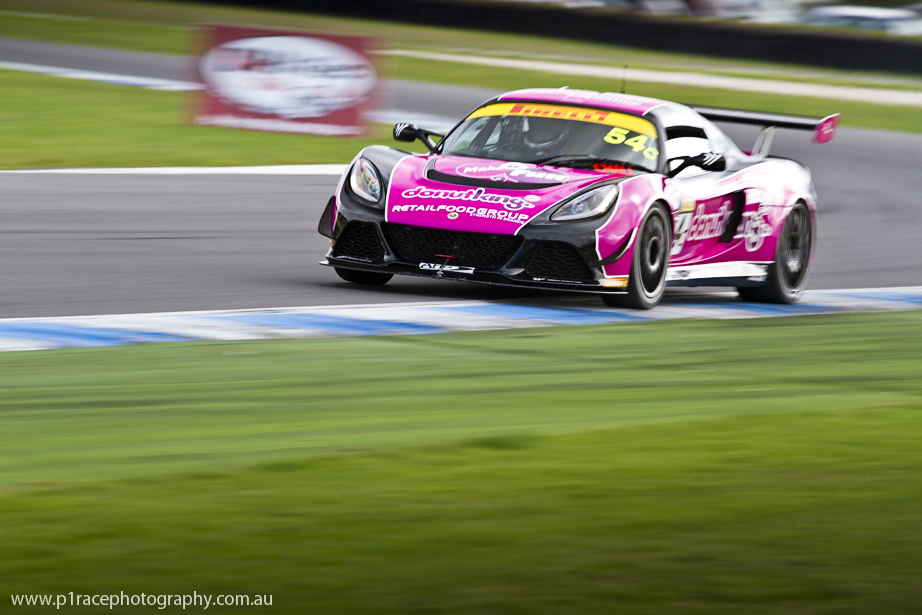
… the very pink Alford/O’Connor Donut King Exige Cup R, which actually competes in a separate sub-category due to its specs …
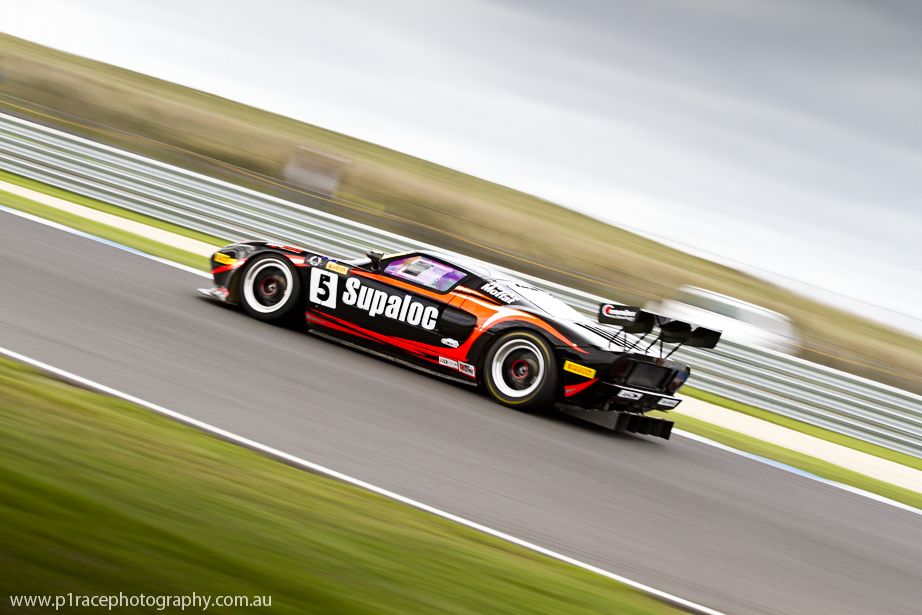
… the Ford GT, driven that day by Nissan V8 Supercars pilot James Moffat and Kevin Weeks …
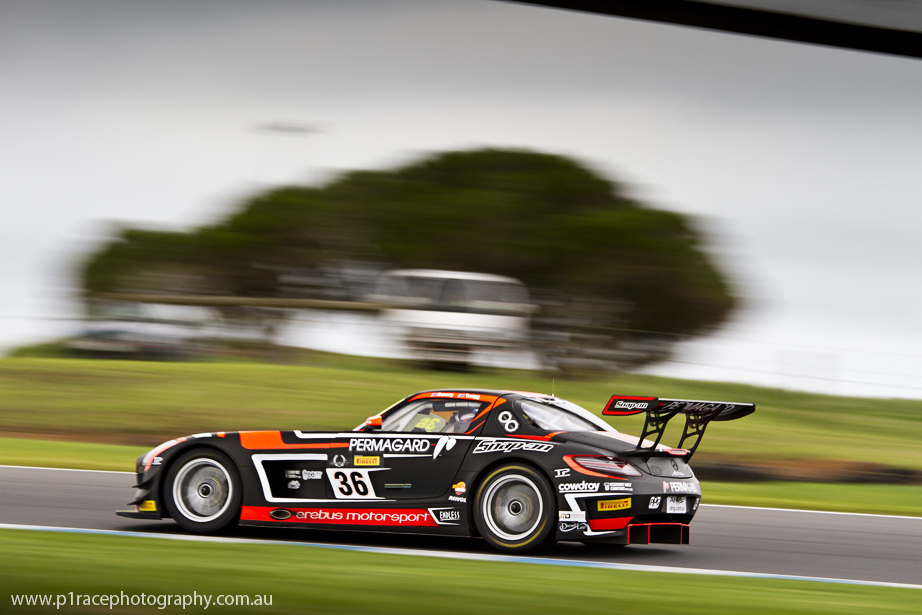
… the Twigg/Emery Erebus Motorsports SLS …
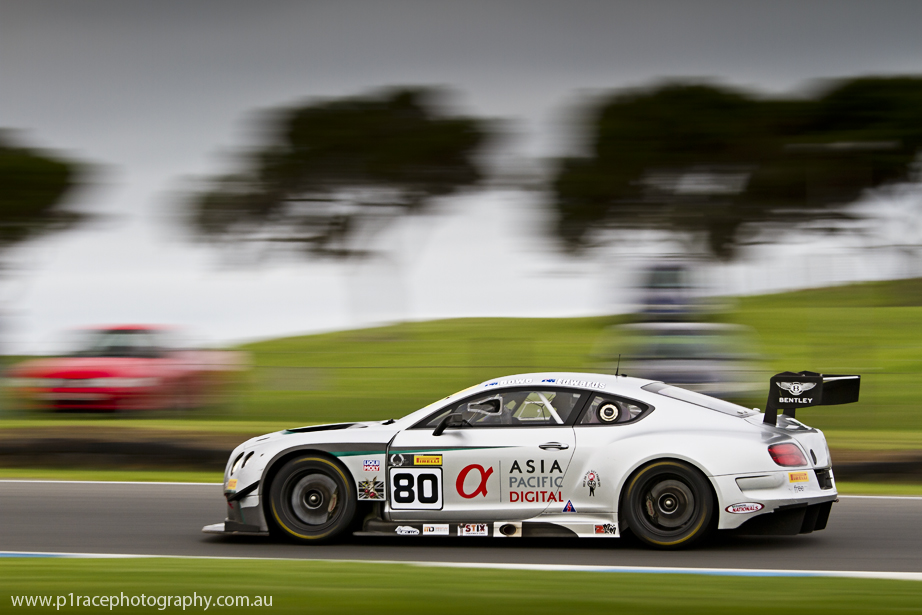
… and the glorious Bentley Continental GT3, run by Flying B Motorsports here in Australia. For those of you who haven’t had the chance to see one of these monsters in the metal, go see one now. Like, right now. They are amazing – nothing this large should go this fast around a track. And the sound. Oh the sound. The English do know how to do a dirty-sounding V8.
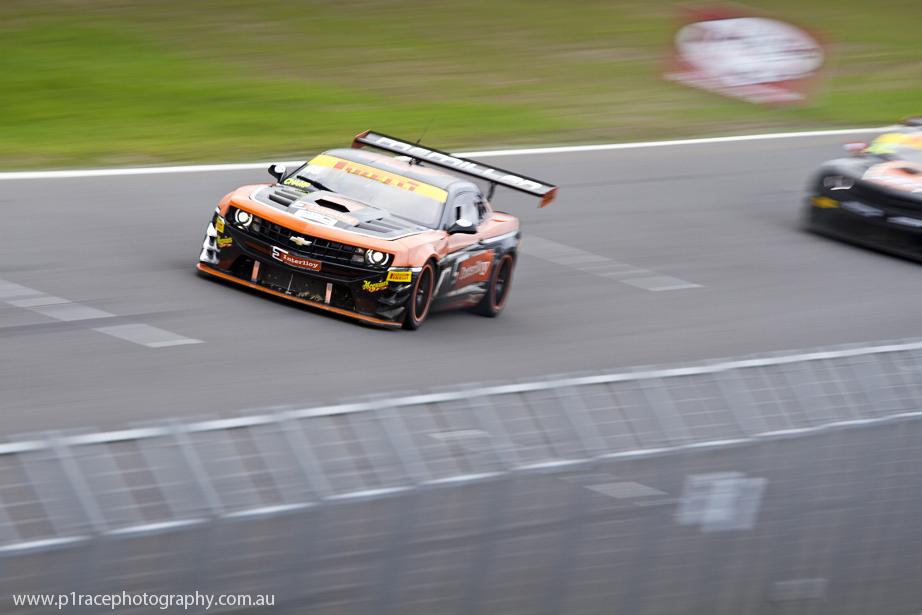
Indeed, it was a toss-up between the SLS, Bentley and the two Reiter Engineering Camaro GT3s as to who had the best engine sound on the day.
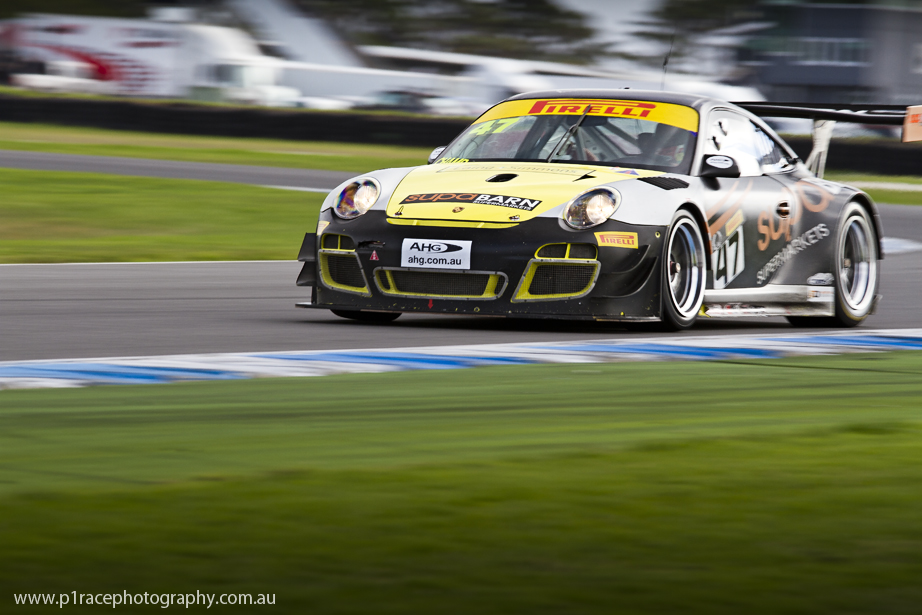
Of course, it wouldn’t be a GT field without some Porsches, and no fewer than eight graced the track over the weekend. Fastest among them was the badass Koundouris/Marshall Superbarn 997 GT3-R, which finished sixth overall.
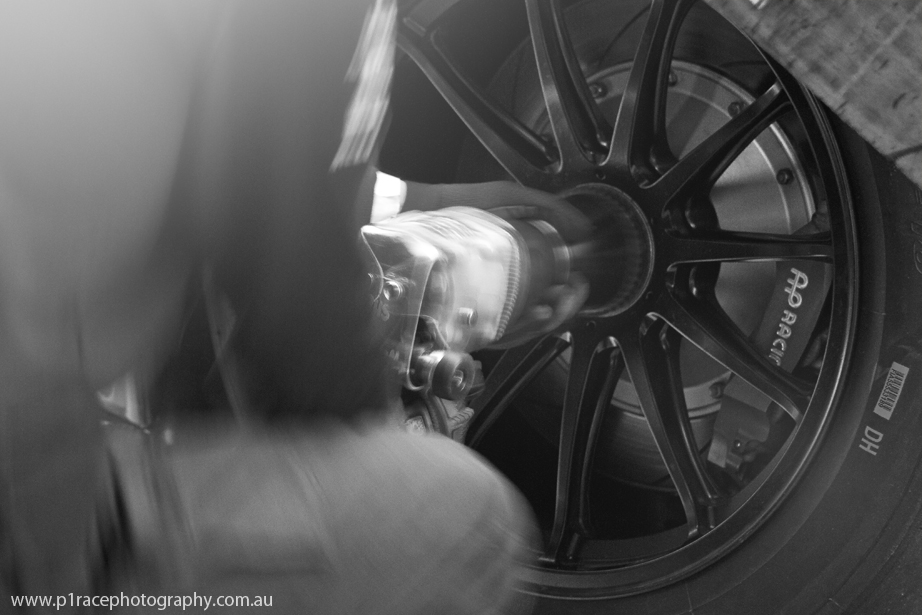
One of the key attractions with GT racing is no doubt the endurance aspect (in this case 101 laps – sadly cut to just under 90 due to a late start and safety cars), which also brings about another spectacular and highly dangerous aspect of motorsport – driver change pit stops.
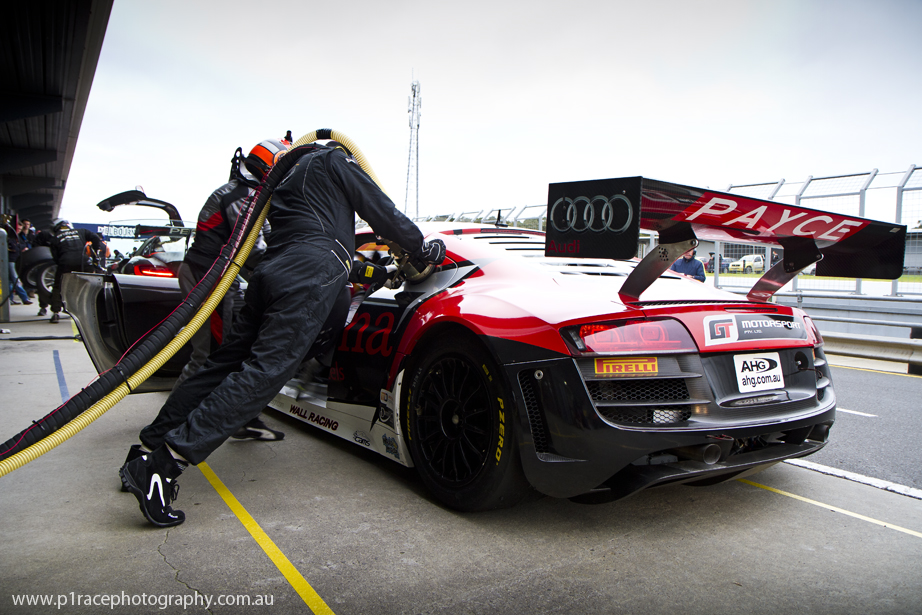
Even on TV you can see the drama and frantic nature of these events, but nothing prepares you for being in the pits themselves when the action happens. Wheelmen dash around the car, some literally throwing heavy wheels and tyres back into the garage after they’ve been removed, and those handling the fuel are in an even more precarious position.

Let’s not forget how many times we’ve seen fuel fires during pit stops, and while thankfully none occurred during the Philip Island 101, things got worrying for a while when the Ginetta suffered a large fuel spill, necessitating a serious amount of soak. What’s interesting when you see these stops up close is that not even TV shows how much fuel drips back onto the car from the nozzles after they’ve been removed. Given how many of these dry-break fillers sit close to or just above the smoking hot tyres and brakes, it’s no wonder we see so many fires.
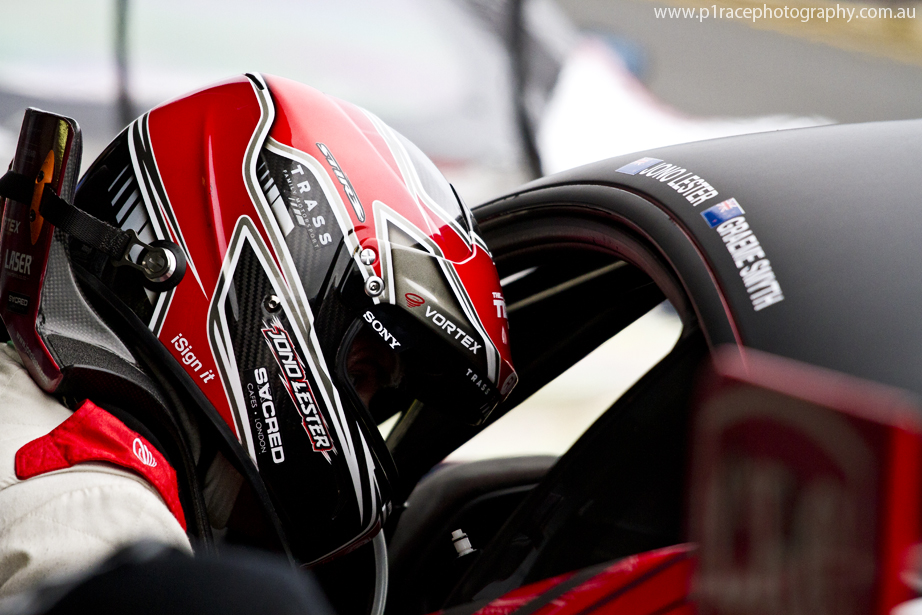
The other aspect of these pit stops is, of course, the driver changes, and here again you see plenty of action. Thanks to GT regulations, there’s generally plenty of time for drivers get swap around, but even then, there’s a lot to do. Pilots exchange information about the car before they change over …
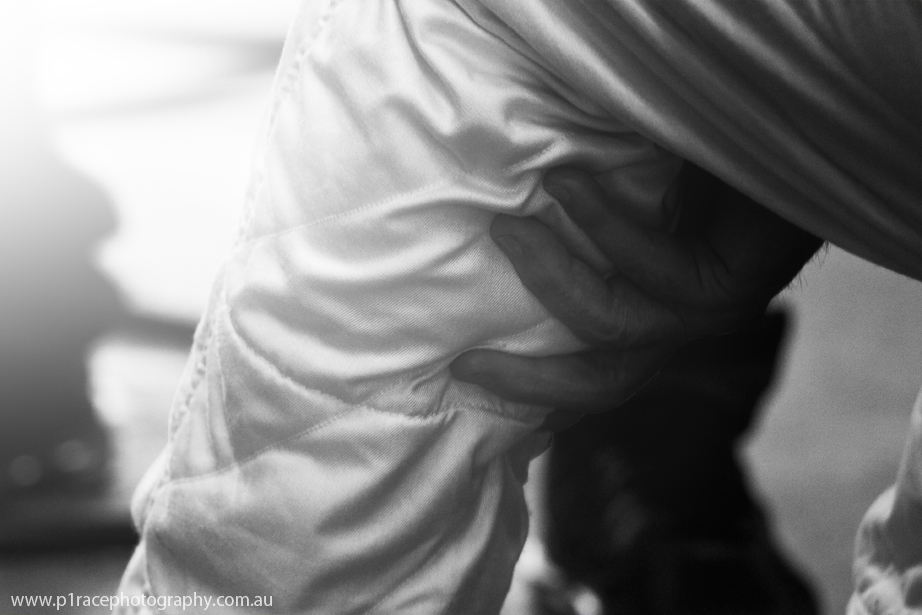
… and for some, stepping out of the car is a chance to deal with injuries they’ve suffered while driving. Tony Quinn, for example, seemed to be suffering from some serious cramp in his calves after the stepped out, and was barely able to hobble out before collapsing onto a wheel to sit down.
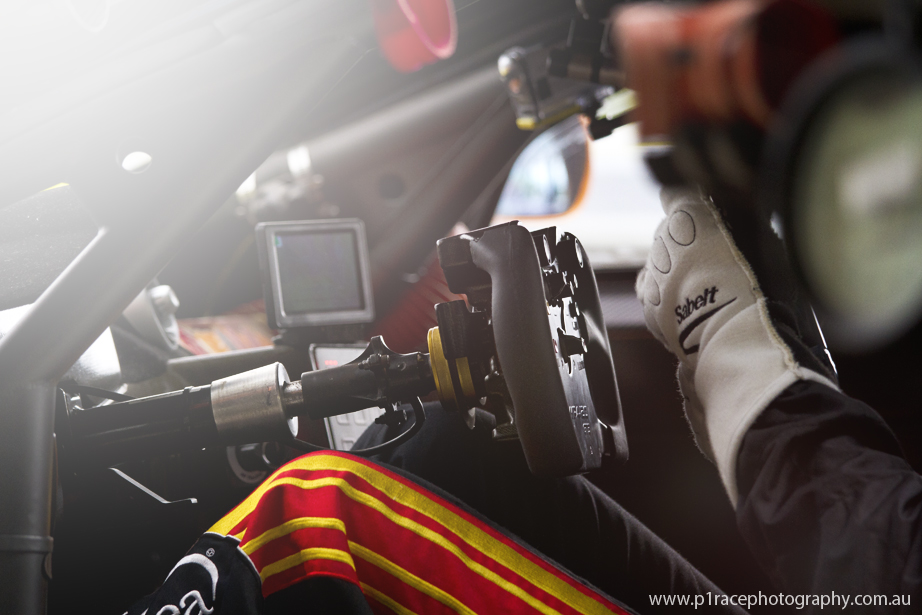
Driver changes are also a great way for us photogs to look into the increasingly complex cabins of these GT3 racers. The McLaren 650S GT3 in particular epitomises how hi-tech these places have become, with a permanent rear-view camera in place of a mirror (visible above to the left of the wheel) and a compact tiller that’s starting to look like an F1 racer’s. As a little aside, it’s fun to note the steering wheels still carry the MP4-12C tag, as Quinn’s cars have been upgraded to 650S-spec and were not 650S’s from the factory.
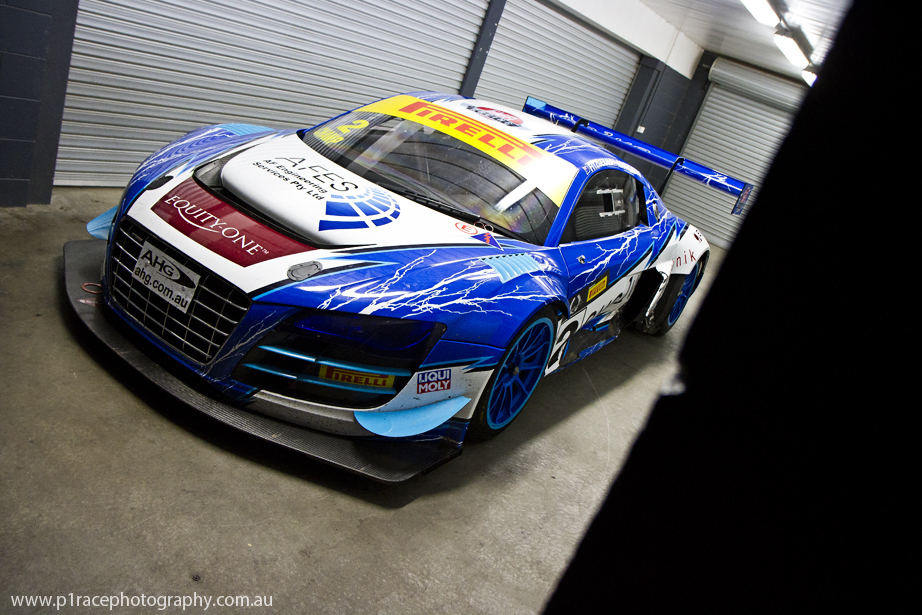
In terms of the race itself, there was of course the usual argy-bargy enduros tend to bring, with three safety cars overall – the first within just two laps. This was caused by Dean Koutsoumidis’ Audi coming together with Jan Jinadasa’s Lamborghini, causing both to retire. You can see the damage to the chassis of Koutsumidis’ car on the right side of the image above.
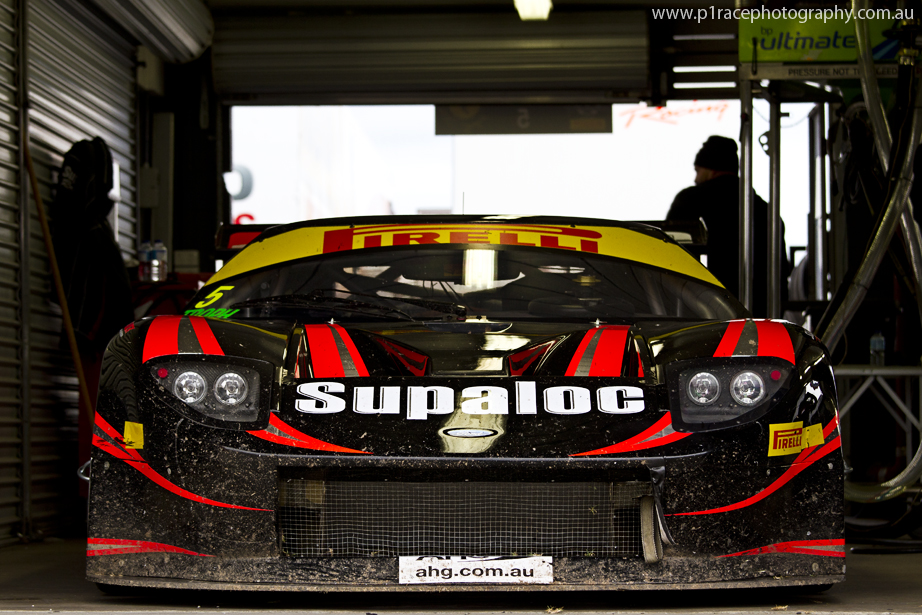
The next safety came soon after, with Moffat (son of legendary racer Alan, if you’re wondering) and the Dean Canto/Andrew Taplin Aston Martin Vantage colliding as well, again forcing both to retire.
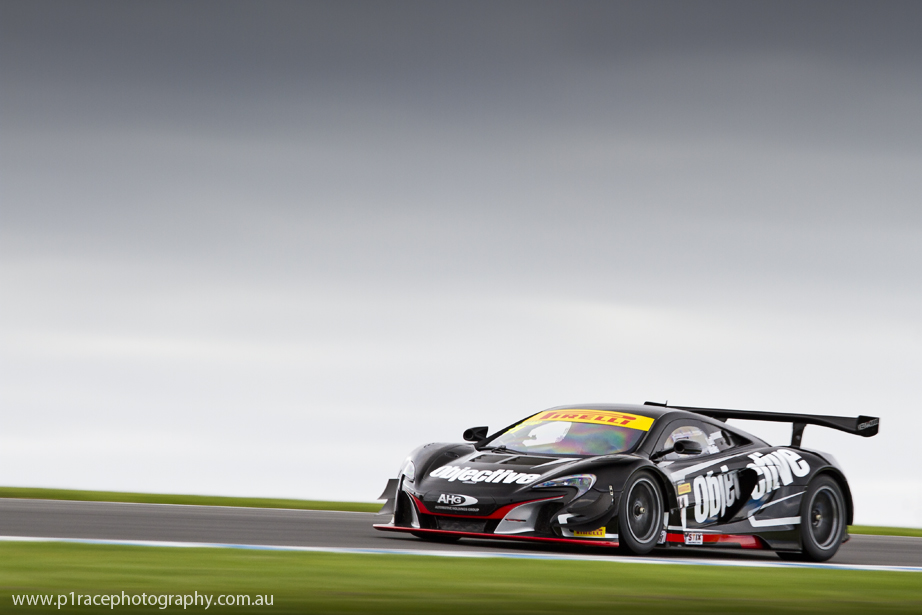
Canto, by the way, is another driver with a V8-Supercars connection, having been both a regular and endurance race pilot until 2013. In fact, several of the drivers for this race were either current or ex-V8 Supercars, including Garth Tander (650S), Cameron McConville (458), Tony D’Alberto (458), Warren Luff (650S – pictured) and Andre Heimgartner (GT3 Cup), which no doubt helped draw a few more punters.
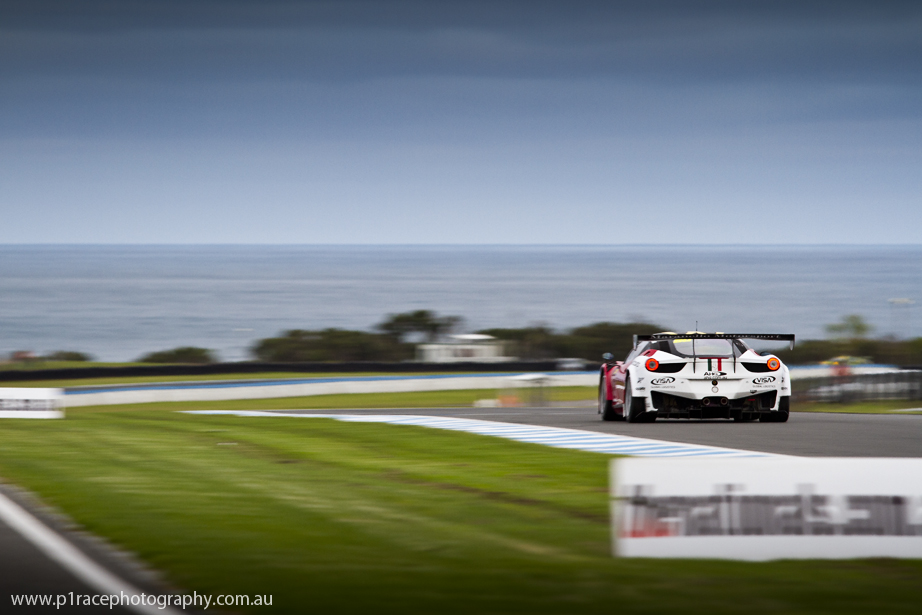
Whether this ever-increasing influx of V8 talent to GT3 racing enduros is helping the already tense situation between the two codes is another matter. For those who don’t follow Australian tin-top racing politics (and frankly I can’t blame you if you don’t), this year’s Bathurst 12 Hour was missing a number of V8 Supercars drivers who were scheduled to compete due to the V8s arranging a test day on the exact same date as the premier GT enduro. An unedifying tit-for-tat squabble ensued and things have been tense ever since. Perhaps the V8 drivers wanting to get into GTs, and the growth of the GT3 category worldwide, is a genuine threat to the V8s. It’s hard to say. Let’s hope there’s room for both, though, as each is attractive in its own way.
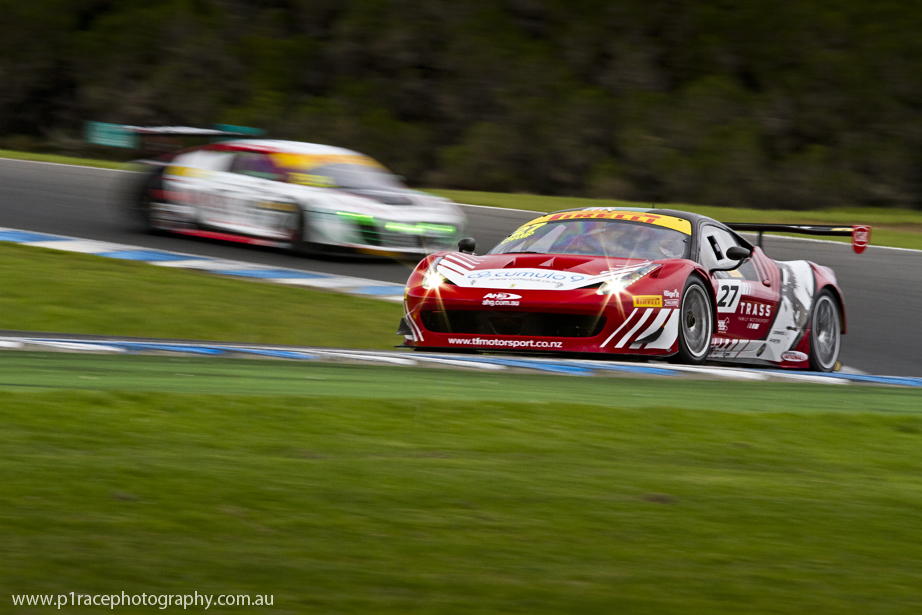
Getting back to the racing, things continued relatively unchanged for a while after the second safety car, with the Trass Family Motorsport 458 of Jono Lester and Graeme Smyth dominating the field, ahead of a mix that included the Jamec Pem R8, driven by Nurburgring 24 Hour winner Christopher Mies and Greg Crick, the Tony Quinn/Garth Tander 650S and another 458 driven by D’Alberto and local TV personality (and avid racer) Grant Denyer.
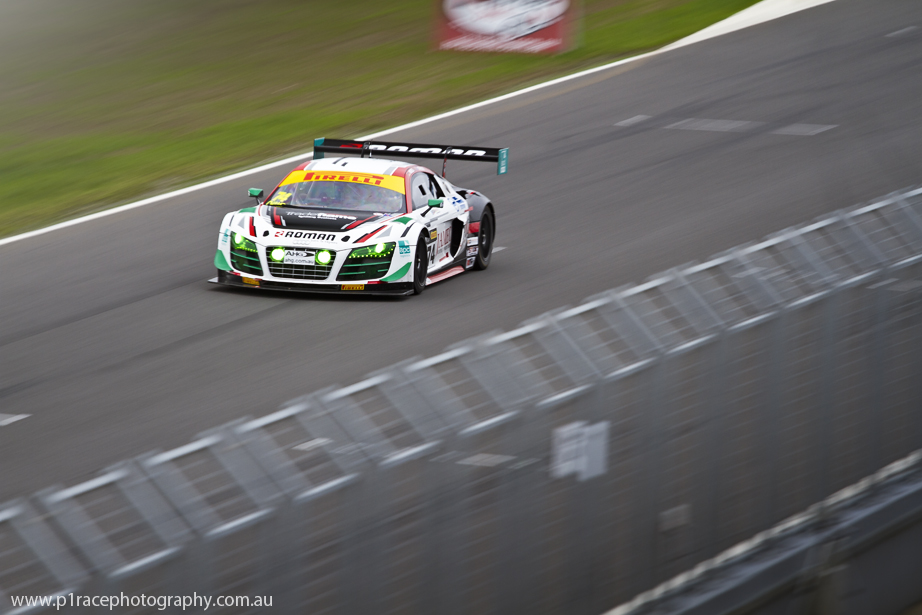
However, soon after the third and final safety car late in the race, brought on by the Bentley (driven by local legend John Bowe and Peter Edwards) leaving the track, Smyth ran wide at one corner, gifting the lead to Mies, who, along with the rest of the field, had caught back up to Smyth under the safety. Mies did not need asking twice, and used his experience from the previous week’s Nurburgring 24 Hours to hold the lead, despite strong pressure from Tander’s 650S in the closing laps, who had moved into second with Smyth’s mistake.

It was an especially poignant victory for co-driver Greg Crick, who suffered serious carbon monoxide poisoning at last year’s Bathurst 12-Hour and was told he’d never race again. After what close friend John Bowe described as a “super-human effort”, Crick got back into his Touring Car Masters Camaro later that year and is clearly now well enough to race with the best.
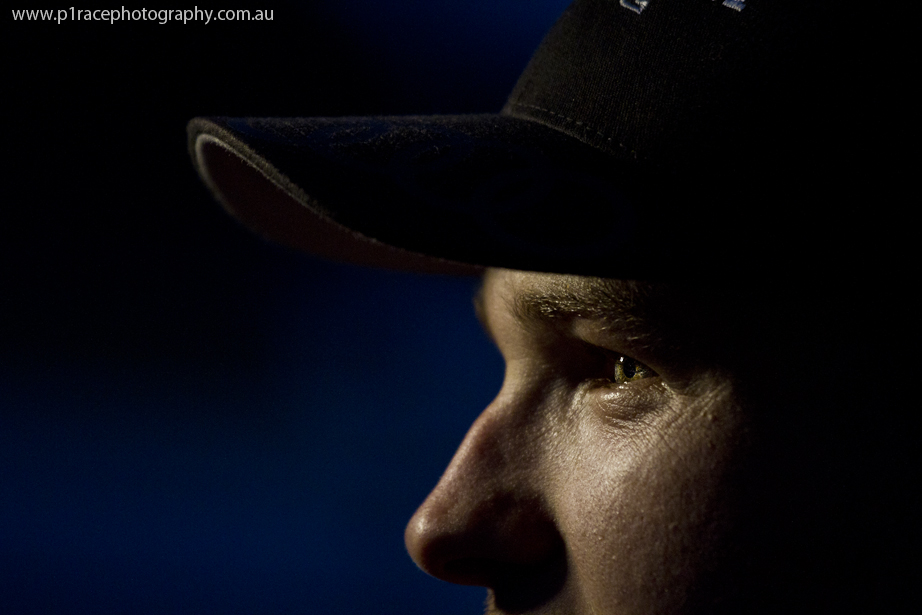
After all the action, the only thing left was post-race interviews …
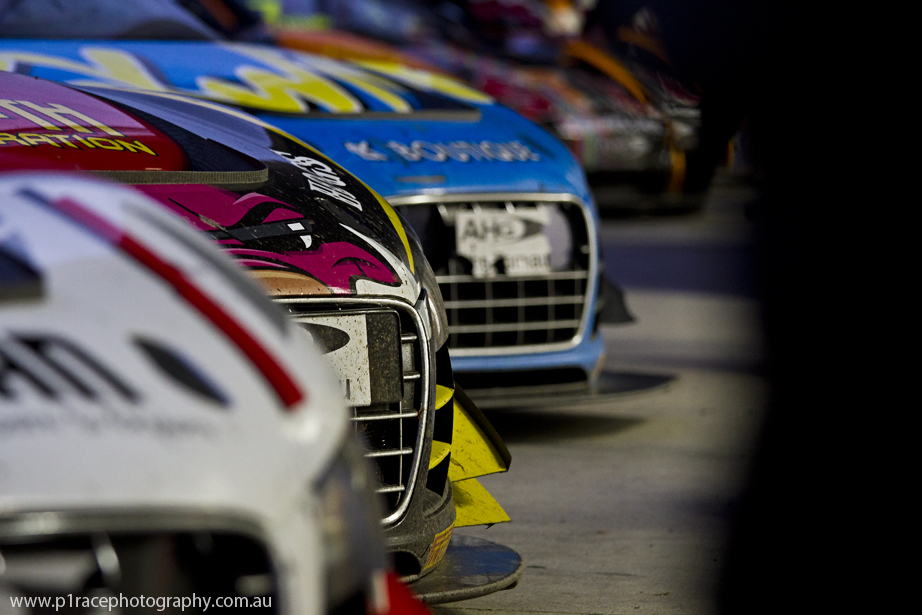
… a rest for the weary machines …

… then packing everything away into the transporters, ready for the next round.
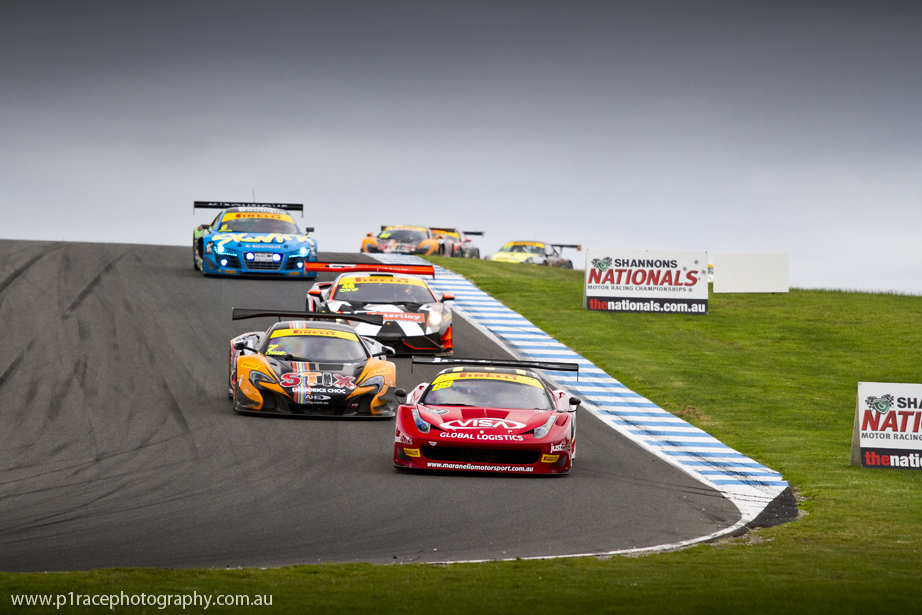
Of course, racing is racing and sometimes, even after the on-track action is done, major news continues to filter out. Here, the it was the fact that the Lester/Smyth 458 was penalised 34 seconds after overtaking during yellows, moving them back into fifth. That meant the D’Alberto/Denyer 458 moved onto the podium and the Erebus SLS gained fourth. But that’s life.
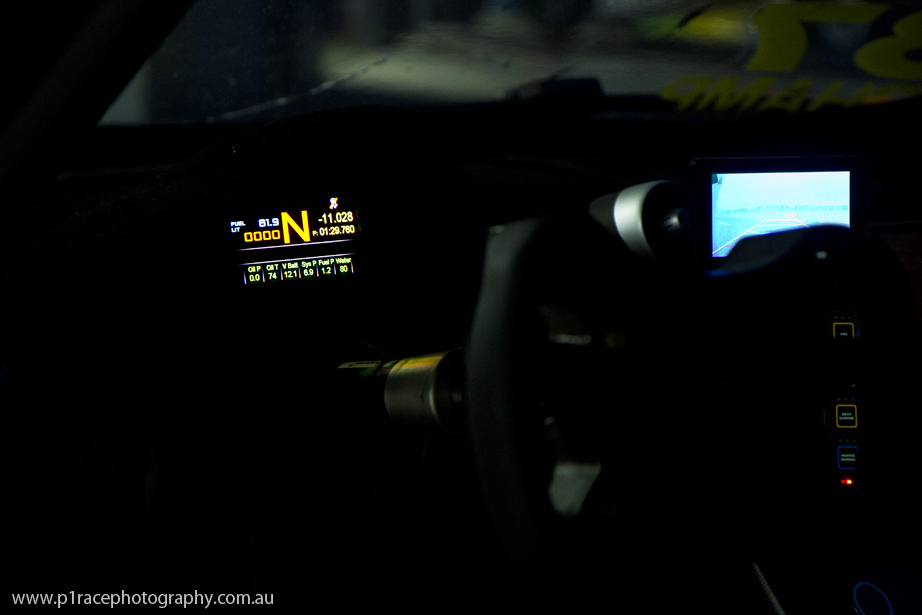
So that was the Shannons Nationals at Phillip Island. I hope you enjoyed it, and if you’d like to see more, please let me know in the comments.

